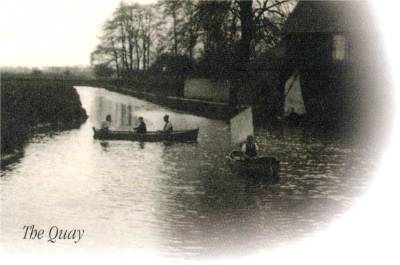Halesworth Town Trail
Quay Street

Quay Street takes its name from the original Town Quay. This area was once a bustling Quay and supported five public houses. Opposite what used to be the thriving Quay is a fine terrace of Georgian houses, including Suggate House, named after George Suggate (1751 - 1844), watch and clock maker. One of his clocks, made in 1780, can be seen in the Angel Hotel. Eighteenth century Quay House is the former home of Lord and Lady Rugby. Lord Rugby was Sir John Maffey, Governor General of Sudan in 1933, who died in 1973.
A railway bridge can be seen at the end of Quay Street. It carries the main line from Lowestoft to London (via Ipswich). On the other side of the bridge is the end wall and embankment of the narrow gauge Southwold Railway, which ran from 1879 - 1929 between Halesworth Station and Southwold, stopping at Wenhaston, Blythburgh and Walberswick on the way.
In the middle of the 18th Century the river was made navigable from Halesworth to Southwold. The Town Quay was in use from the mid-18th century until 1883. A new brick lock was made at Halesworth and new cuts were dug. The first keel arrived from Southwold in 1761, laden with coal, shortening the journey of the cargo considerably. Part of the old Navigation can be seen in the Town Park.
Wherries and keels would regularly sail from Halesworth to Southwold and along the East Coast and into London, serving the Maltings trade. The cargo would also consist of corn, coal, iron, bricks and timber. The combination of the silting up of the river and railway transportation killed off this industry and the last trip was made in 1882.
View the Town Trail on the Halesworth Map
